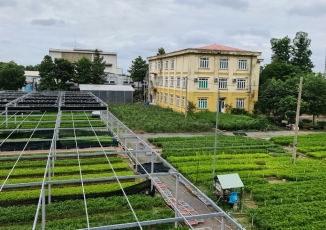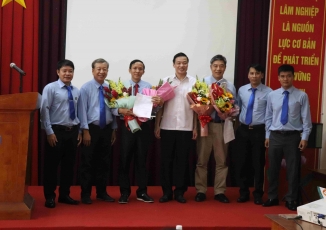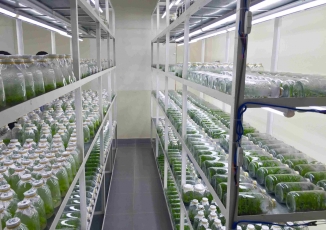Returns to Vietnamese smallholder farmers from managing acacia plantations for sawn wood over 4-10 year rotations
Returns to Vietnamese smallholder farmers from managing acacia plantations for sawn wood over 4-10 year rotations
DavidBlackburnaVu DinhHuongbDanielMendhama
Abstract
Since 1990, forest area in Vietnam has increased by around 15%, and now comprises more than 42%. The increase is mainly due to the establishment of short rotation Acacia plantations, which assist in the rehabilitation of under-utilised lands, and can be grown in short rotations by smallholder farmers for a range of uses. Presently, a high demand for woodchips encourages farmers to maintain short rotations for pulplogs and provides them with a relatively quick return from their forestry land. The Vietnamese Government has recognised an opportunity to increase sawlog production for a rapidly expanding furniture industry. The main objective of this study was to understand if small-scale Acacia plantations, managed for both pulp- and sawlog production, could provide an attractive return to smallholder farmers. Forecast earnings from the models indicated that opportunities exist for smallholders to improve their financial returns. With minimal additional inputs, plantations with a thinning intervention treatment at 3-years would be more profitable than unthinned ones, irrespective of whether the plantations were harvested in year 4 through to year 8. In 4 to 8-year rotations, the 6-year thinned operation was modelled as being the most profitable. When plantation models were extended to 10-years, the returns were even higher because of the greater volume of larger diameter higher value sawlogs. Sensitivity modelling found shorter rotation returns were highly sensitive to factors influencing income, whereas 10-year rotations were shown to be more resilient, although the growers would need to manage their risk profile, as well as acquire the knowledge and management skills required to effectively manage longer rotations. Outcomes from the study suggest that growing for sawlogs is a better option for farmers, in terms of the internal rate of return. A transition from short to longer rotations will require support for farmers, in terms of: (1) risk management, (2) training in longer rotation management, and (3) greater social acceptance of longer rotations.
https://www.sciencedirect.com/science/article/abs/pii/S1389934120306444?via%3Dihub
- Growth, physiological responses and wood production of an Acacia auriculiformis plantation in southern Vietnam following mid-rotation thinning, application of phosphorus fertiliser and organic matter retention - 14/09/2021
- Solid wood property variations in early-age Acacia plantation trees grown in southern Vietnam - 14/09/2021
- Sustainable Management of Acacia auriculiformis Plantations for Wood Production over Four Successive Rotations in South Vietnam - 14/09/2021
- Kết quả nghiên cứu khoa học lâm nghiệp giai đoạn 2000 - 2016 - 09/04/2021
- Công nhận giống cây trồng lâm nghiệp Thanh thất, Chiêu liêu - 30/05/2021
VIDEO CLIPS
Liên kết
Ấn phẩm mới
Thống kê truy cập
Đang online: 8
Truy cập ngày: 13557
Tổng truy cập: 276238

















